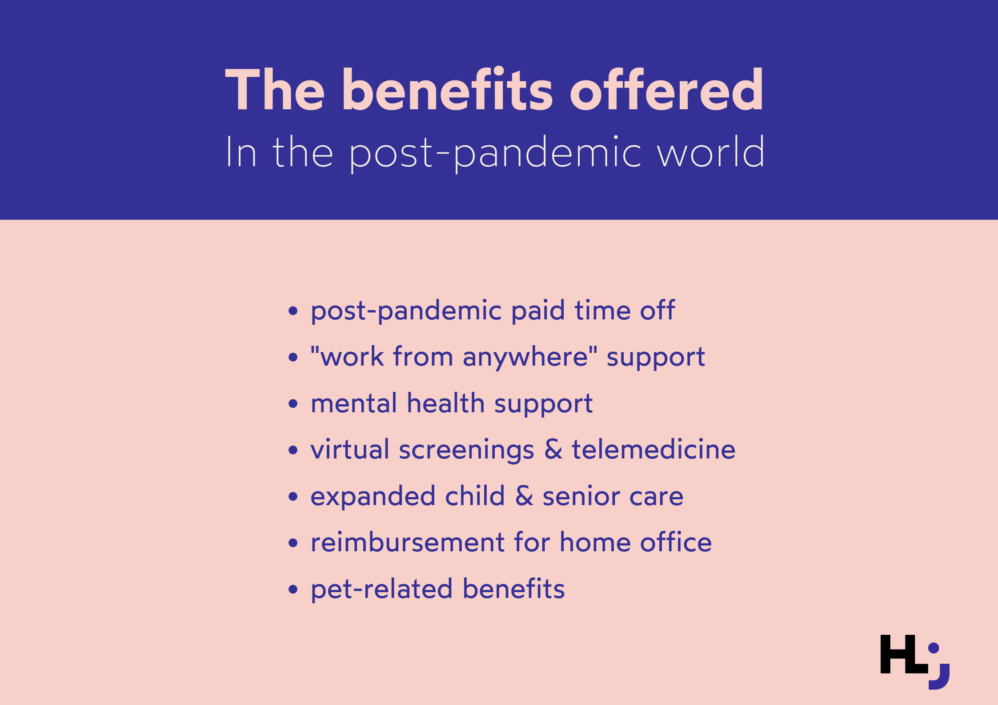Employee benefits in the post-pandemic world

“Never let a good crisis go to waste.” Although we don’t know who the author of these words is (sources say it may have been Winston Churchill), it’s evident that today’s leaders should keep them in mind. The Covid-19 crisis has taught us that times of disruption are best for changing what should have been changed long ago.
What to do to retain employees
Ten years ago, no one could have imagined that working from home and flexible hours would become the norm. Remote-first companies like Zapier and Buffer thrive, and their employees enjoy benefits like unlimited paid time off, personal development grants, and vacation bonuses. The pandemic has forced employers to embrace flexibility and recognize that employee benefits can be life-changing for their employees. And what most executives will have to accept when the pandemic is over – there is no going back to the old ways.
“The pandemic has impacted businesses in many ways. Some declined, others grew, but staying at the same level in these circumstances should be considered a success. Now that the pandemic is hopefully over, leaders need to do everything they can to retain their employees. What is given once should not be taken away,” says Daniel Aduszkiewicz, CEO and Co-Founder of Human Panel.
Personalization vs. standardization
An inescapable conclusion from the Covid-19 crisis is that the one-size-fits-all approach and standardization must be replaced by personalization. Most employees opt for a hybrid work model, while others say they want to work exclusively remotely. For this reason, companies need to design their employee benefits to work best – or they will start losing employees.

“Companies used to introduce a galaxy of employee benefits, from in-house massage therapists or barbers to premium video game subscriptions. Each of them can either work or come as ridiculous, depending on who their recipient is. Manual laborers might appreciate a lunchtime massage, and a young team might be very into video games. But the only way to understand what your employees need is to either ask them personally or aggregate data. this should always be your first step if you’re an HR leader,” adds Daniel Aduszkiewicz.
Tailor the employee benefits
To better illustrate this, let’s look at TikTok. The company thoroughly analyzed the backgrounds and life situations of their new hires. It turned out that a significant portion of their workforce in some regions was single parents. Therefore, they offered childcare as a top benefit.
“From a business perspective, it’s easy to negotiate: you decide you need 4,000 hours of babysitting per month. It’s a win-win because you’re providing people with something they need while gaining more relaxed employees in return,” says Daniel Aduszkiewicz.
Confront declarations with data
However, there is also the other side of the coin. Great employee benefits don’t always lead to employee retention. Satisfaction levels may be high, but at the same time, employees may not be achieving their goals. That’s why it’s essential to measure both employee satisfaction and performance.

“Don’t just rely on what people say. We like to declare different things, but it’s always worth confronting the declarations with data. Sometimes, we are blinded by PR and employer branding, which would have us believe that most companies’ employees are happy and motivated. At the same time, people leave these companies,” says Daniel Aduszkiewicz.
That’s why it’s critical to understand your workforce – not through opinions but facts. “Don’t think you know your people, because this is one of the most damaging ways to manage HR. You’ll fare better if you look at your organization through data. That way, you can devise adequate tactics and really solve a problem,” concludes Daniel Aduszkiewicz.
Do you want to start working with data in HR? Human Panel provides an end-to-end solution for companies that want to better organize their HR processes and workforce data. Sign up for a free demo and see how it works by filling this simple form:



